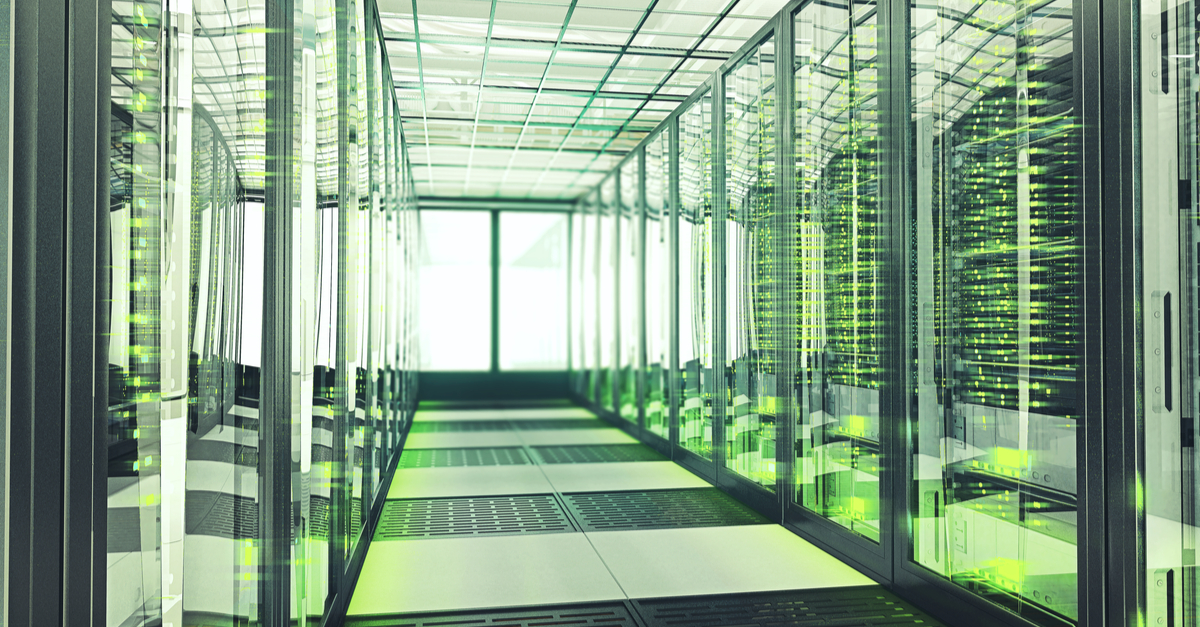Proponents of reuse culture like to point out that waste does not exist in nature. In the same way nature reuses resources, how can we minimize waste in data center management?
Here are some flagship initiatives, focused on the data center and inspired by the broader shift toward a circular economy. Each seeks to reduce the environmental footprint of enterprise and cloud computing.
- Microsoft’s Carbon Negative Pledge
- Reducing Data Center E-waste
- Google’s Data Centers
- The Future is Reuse
- Increasing Urgency Around Green IT
- Hard Drives From Hard Drives
- Promoting Reuse Of HDD
- Factory Recertified Drives
- OEMs Prioritizing Sustainability
- A Tipping Point For Circular?
- Where Sustainability Meets Profitability
Microsoft’s Carbon Negative Pledge
The tech titan from Redmond started the 2020s with a bang. It pledged not only to become carbon negative by 2030 but to have offset its historical carbon emissions by 2050. (This represents its entire carbon footprint since its foundation in 1975.)
Part of this initiative involves moving to 100% supply of renewable energy for Microsoft data centers (and other company operations) by 2025. The firm is also working with its supply chain partners, including in the data center, to curb carbon-emitting behaviors.
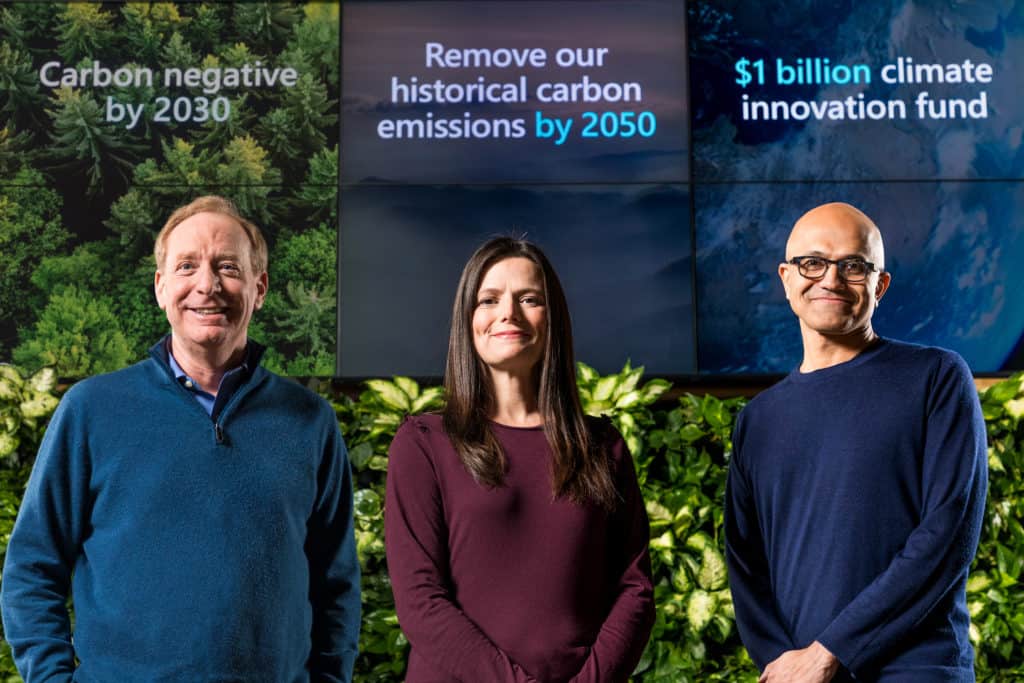
This lofty goal hasn’t been without its challenges, though. After three years of modest declines, Microsoft’s emissions jumped over 21% from 2020 to 2021. Emissions rose from 11.2 million to 13.8 million metric tons.
Much of this was from “Scope 3” emissions. This includes energy spent by suppliers and customers, as well as that used in building data centers. Nevertheless, Microsoft remains committed to net-zero by 2030. By this point, it hopes to have reduced Scope 3 emissions by 50%.
There has been progress in other areas. Microsoft succeeded in reducing Scope 1 emissions (directly from company operations) and Scope 2 emissions (due to company electricity, heating, etc) by 17% year-over-year. Plus, it purchased the removal of 1.4 million metric tons of carbon in 2021. This year, meanwhile, it’s on track to purchase 1.5 million metric tons. Together, this makes it one of the world’s largest purchasers of carbon removal.
Moreover, a key part of the initiative is a focus on transparency. To this end, Microsoft hired accounting firm Deloitte to independently review its carbon reduction process.
Reducing Data Center E-waste
Of course, not all of tech’s environmental impact relates to energy usage. Another area of focus is responsible IT asset management. On this front, Microsoft is increasingly active. To combat e-waste, the firm is developing Microsoft Circular Centers to ramp up reuse and supply chain efficiency.
The first such center, located in Amsterdam, achieved 83% reuse and 17% recycle of critical parts, according to the firm. By 2025, Microsoft aims to reuse 90% of its cloud computing assets.
One interesting development is Microsoft’s internal use of its own Microsoft Dynamics 365 Supply Chain Management Software. The software helps track and optimize warehouse inventory, drive decommissioning and part retrieval.
| “Using machine learning, we will process servers and hardware that are being decommissioned onsite. We’ll sort the pieces that can be reused and repurposed by us, our customers, or sold. We will use our learnings about reuse, disassembly, reassembly and recycling with design and supply chain teams to help improve the sustainability of future generations of equipment.”一Microsoft President Brad Smith |
Google’s Data Centers
Don’t be evil? Google has a long track record of setting and meeting ambitious goals related to its carbon footprint.
In 2007, Google became one of the first major companies to become carbon neutral. Fast forward to 2020 when it announced its carbon footprint had been reduced to zero through offsetting historical emissions. After pressure from employees, Google now plans to be entirely carbon free by 2030.
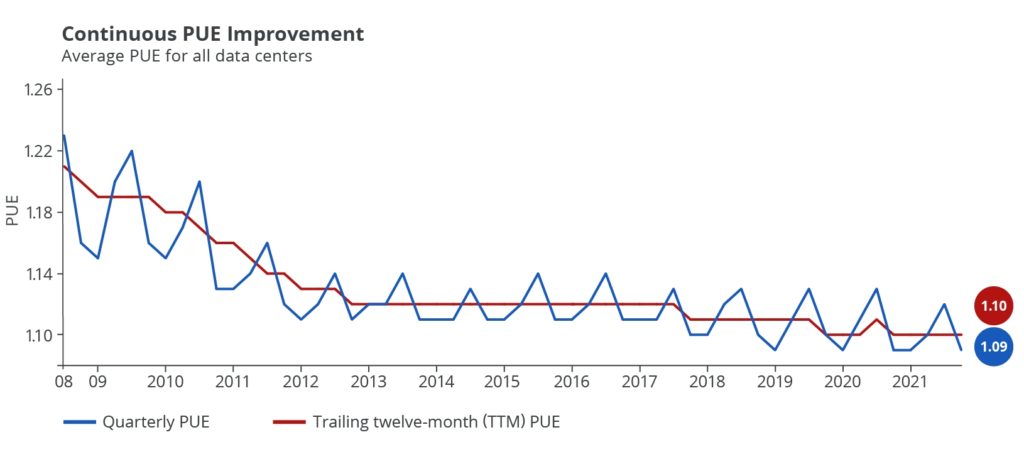
By most measures, Google has made notable progress in decarbonizing its operations. Between 2011 and 2020, for instance, it reduced greenhouse gas emissions by 63%. Since 2016, the company has matched 100% of electricity consumption with renewable energy purchases.
The Future is Reuse
Google has also become increasingly involved in reuse and recycling initiatives.
As of 2020, all of its “Made By Google” hardware products include recycled materials. In addition, over 23% of components used for server upgrades were from refurbished inventory.
The company is also active in promoting drive reuse. In 2020, Google resold more than 8.2 million components into the secondary market. In addition, 81% of its waste is now diverted away from landfills. All of this is good news when it comes to reducing e-waste.
Nevertheless, Google, alongside other companies such as Microsoft and Apple, have lobbied hard against right-to-repair laws. These require tech companies to make device schematics and replacement parts more widely available. However, there are promising signs that public pressure is leading to a more flexible approach to repair by some companies.
Increasing Urgency Around Green IT
Despite the advances made by the likes of Google and Microsoft, it’s a long road ahead. The drive to recycling data center hardware and embracing other green IT initiatives requires constant effort.
The data tells the story. According to the latest Global E-waste Monitor report, the world generated 53.6 million metric tons of E-waste in 2019. Out of this total, only 17.4% was properly collected and recycled.
Equally dire are data center emissions, which account for 3% of the world’s power production. This portion could become as high as 8% by 2030, given the constant growth of digital services.
That said, there are some signs that organizations are at least becoming more aware of the problem. According to a 2021 Supermicro survey of more than 400 IT professionals and data center managers, an encouraging 94% of respondents were aware of power usage effectiveness metrics in their data centers. This compares with a lowly 31% in 2019.
There’s also been an increase in the percentage of respondents who recycle drives through various means. However, this good news is tempered by the fact that internal reuse is down. Plus, the percentage of respondents admitting to outright disposal has increased.
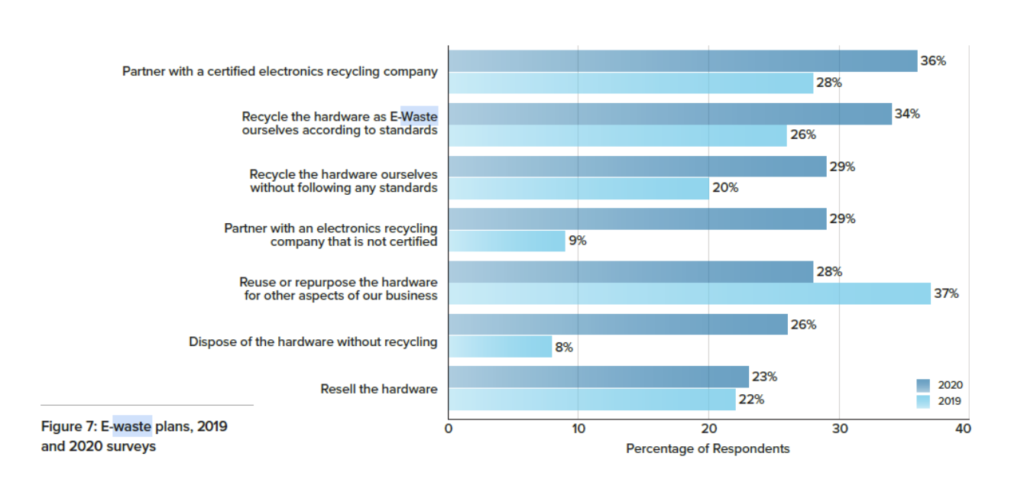
As rare materials become harder to come by and energy costs rise, this picture may change.
“Cooling and power costs have become so significant that finding cost effective, reliable, and greener electricity has become a critical business concern”, the report states. “Green computing pays: remember that sustainability initiatives in the data center are not only good for the environment but good for a company’s bottom line.
Hard Drives From Hard Drives
Recycling can take many forms, and the recycling of data center hardware is no different. The “value recovery project”, conducted by industry group iNEMI and completed in 2019, focused on the role enterprise HDDs can play in driving the circular economy.
iNEMI believes end-of-life HDDs are particularly good candidates for reuse. “They have a standard form factor, consistent manufactured design, and the market demand for data storage is outpacing the ability of HDD and SSD manufacturers to keep up with demand” the group explained. The presence of valuable rare earth material is another reason to target HDDs for closed-loop recycling.
With many hundreds of millions of HDDs in worldwide circulation, the iNEMI report authors illustrated how hard disk drives can be used as “technical nutrients” in a circular computing ecosystem.
In demonstration 1 of iNEMI’s value recovery project, voice coil magnet assemblies containing rare earth elements were recovered from end-of-life hard drives for reassembly into new drives that Google would eventually use. Where it was not possible to reuse HDD magnets in hard disk drives, iNEMI remanufactured the magnets for use in motors in demonstration 2.
Promoting Reuse Of HDD
Recycling is one thing, but what about reuse? In spite of the economic (and environmental) upsides, refashioning HDD lifecycle management into a circular workflow remains an uphill task. For various reasons, organizations have not exactly clamored to reuse hard disk drives.
Although the secondary market for HDDs may be flourishing at the margins, it only touches a fraction of the total stock available. Among industry barriers to HDD reuse are apprehensions around data security and a lack of supply chain coordination, iNEMI reports.
“Users frequently demand physical destruction even when complete, verifiable data wiping is possible economically and logistically. This leads to widespread HDD shredding, which precludes reuse of the HDDs, harvesting of components for reuse, and recovery of trace—but critical and strategic—materials,” the report’s authors state.
Accordingly, iNEMI has been actively working to establish an industry framework to better facilitate the reuse and remarketing of HDD.
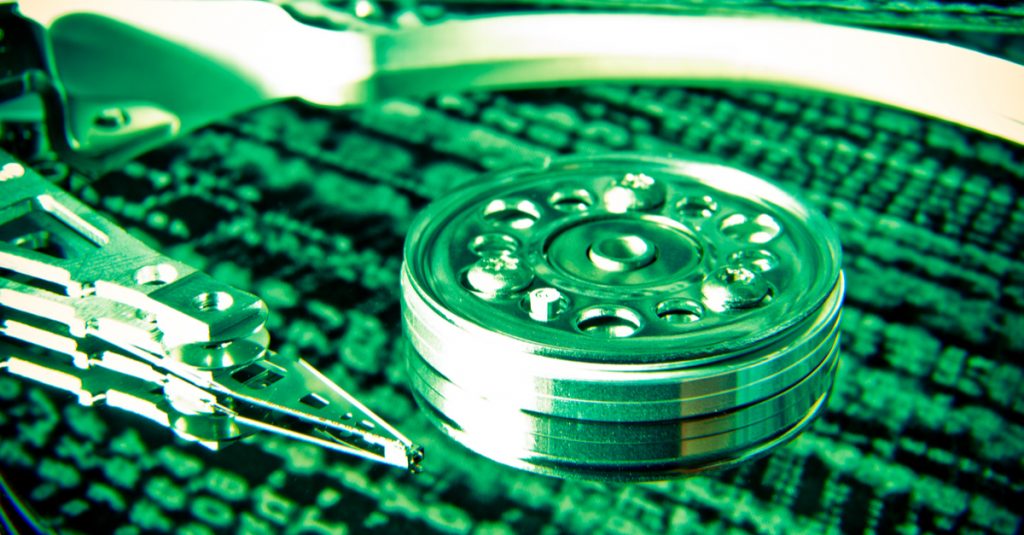
Read more about iNEMI’s report into HDD and the circular economy.
Factory Recertified Drives
While the harvesting of parts from end-of-life equipment is an important aspect of circularity, repair and reuse remain the gold standard.
The longer we can keep data center hardware like hard drives in operation, the better. “Reuse provides the highest value recovery for functioning drives and is used when the logistics and supply chains for wiping are controlled.” says iNEMI.
Enter factory recertified drives. From significant cost savings to performance benefits, there is a compelling (and entirely circular) business case for deploying recertified drives in your enterprise storage mix.
Millions of high-capacity, state-of-the-art, under-warranty drives could be available for wiping and resale every year if proper controls were in place to verify that the data wiping had been performed properly.
iNEMI report
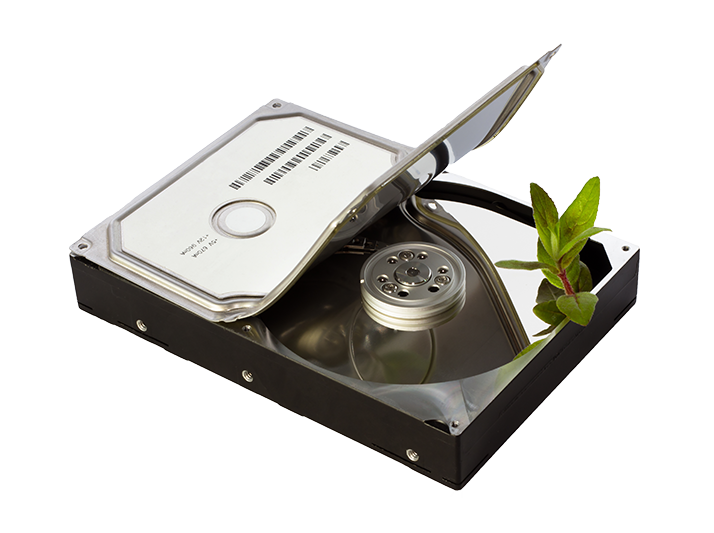
Learn more about the benefits of factory recertified drives.
OEMs Prioritizing Sustainability
It’s not just hyperscale operators such as Google and Microsoft, or industry groups such as iNEMI, that are onboard with circular principles: large OEMs have long promoted the importance of green IT.
Take HPE’s label for data center efficiency, announced at the 2020 World Economic Forum in Davos, and its commitment to refurbishing or recycling returned enterprise hardware. In 2020 alone, the company processed 35 million pounds worth of hardware assets, refurbishing 90% and recycling the remainder.
Rival Dell is also on the circular march. Speaking from Davos before the major onset of the pandemic, the company’s chief customer officer Karen Quintos said tackling the problem of e-waste required a “material change” in systems approach.
“Individually we’re not going to solve this challenge, we are only going to solve it collaboratively,” Quintos remarked. “We need to get aggressive and set some big moonshot goals, and then work in collaboration with our partners, suppliers, and customers toward material change.”
She encouraged technology companies to rethink their supply chains and their approach to product design. “They have to design products at the beginning with the ability to reuse and recycle them [in mind].”
For its part, Dell is making progress against its targets. It announced in early 2019 that it had met its 2020 goal of recovering 2 billion pounds of used electronics across consumer and enterprise-facing hardware 12 months ahead of schedule.
The firm has since followed this up with an initiative to recycle customer hardware for free一even if it’s not a Dell product.
A Tipping Point For Circular?
If you need further convincing that the data center is going circular, consider the steady stream of politicians and industry insiders increasingly talking the language of conserve and reuse.
World leaders in Davos have firmly voiced commitment to circular initiatives at their meetings in recent years. Open source proponents, such as the Open Compute Project Foundation, routinely promote the development of core standards in the enterprise data center that facilitate hardware reuse. And the European Union directive on reducing energy consumption in the data center adopts many circular principles.
Meanwhile, the Ellen MacArthur Foundation , a vocal advocate for circularity in all areas of modern life, loudly bangs the drum for industry efforts to drive up hardware reuse through smart lifecycle management.
Where Sustainability Meets Profitability
Data center management of IT hardware is rightly under the microscope. But it’s not just corporate stewardship of the environment that is on the table. According to analysis from Accenture, the financial upside of implementing circular business practices could reach as high as $4.5 trillion by 2030.
Now that’s worth taking seriously by anyone’s measure.
At Horizon Technology, we are passionate advocates for circular computing. Let us help you unlock circularity and uncover savings in the management of your data center and enterprise storage hardware.
Interested in learning more about circular? Here are seven steps for greening your data center hardware.






